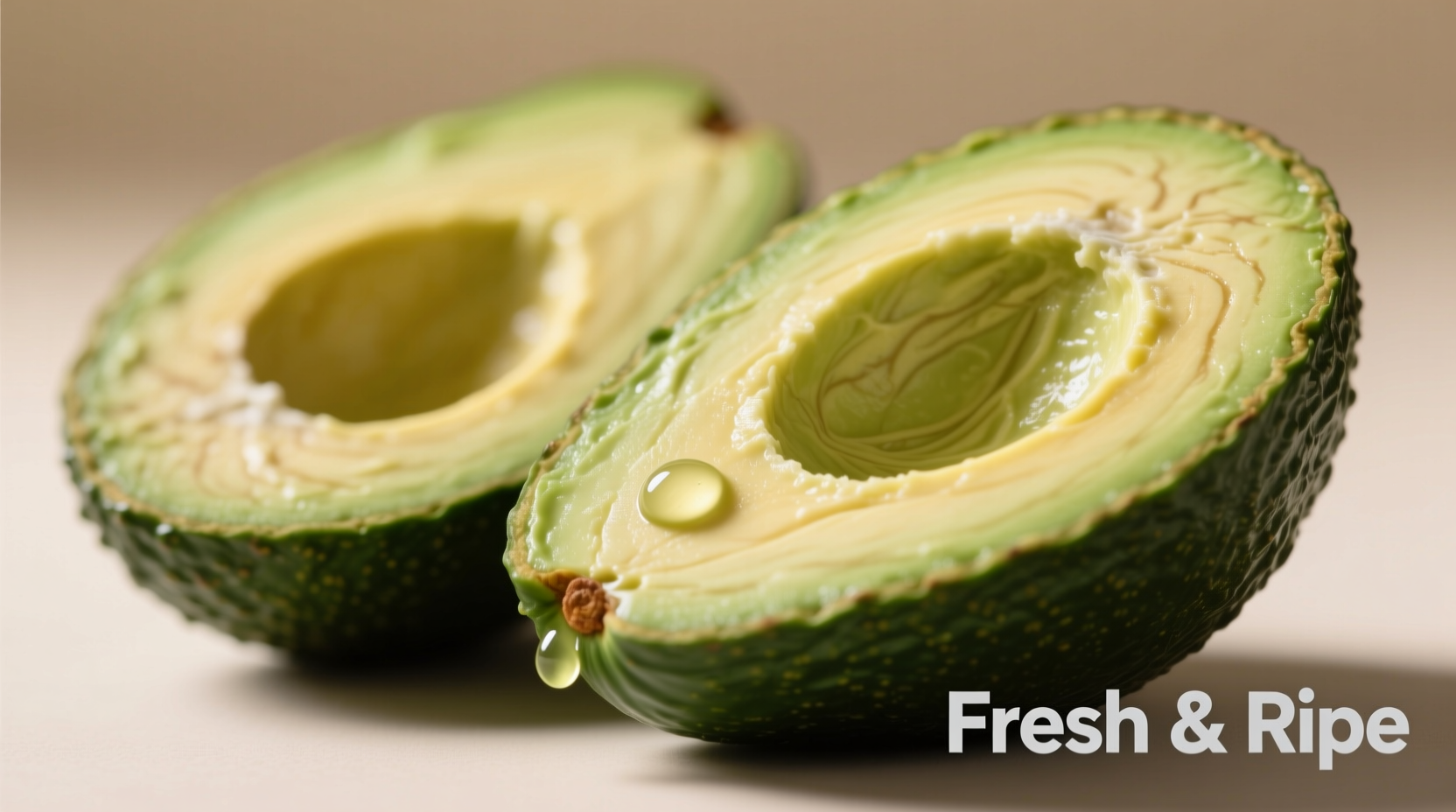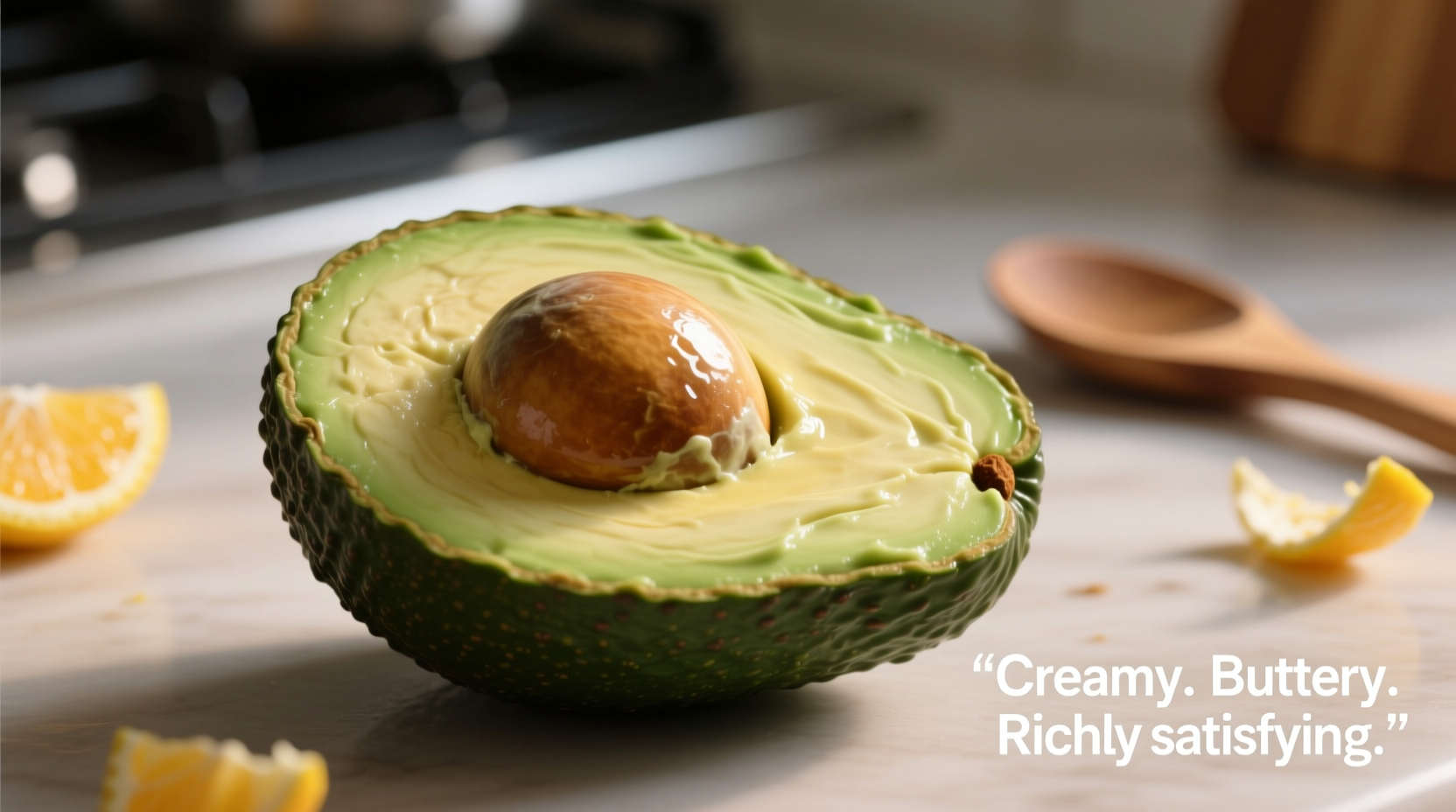Ever sliced open an avocado and wondered why this 'alligator pear' tastes nothing like dessert fruit? You're not alone. As someone who's studied Latin American ingredients from Andean markets to coastal villages, I've seen how misunderstanding avocado's flavor profile keeps people from unlocking its culinary potential. Let's cut through the confusion with precise sensory details you can trust.
Breaking Down Avocado's Flavor Profile
Avocados occupy a unique space in the fruit kingdom. Unlike sweet fruits that hit your palate with sugar-forward notes, ripe avocados offer a complex sensory experience:
- Fatty richness - The high monounsaturated fat content creates a buttery mouthfeel similar to macadamia nuts
- Earthy undertones - Distinctive grassy notes reminiscent of fresh herbs
- Nutty finish - A subtle almond-like aftertaste that intensifies as it ripens
- Near-neutral pH - At 6.2-6.6, avocados sit just below neutral, explaining their remarkable flavor adaptability
According to USDA agricultural research, these characteristics stem from specific compounds like persenone A (responsible for the earthy note) and various terpenes that create its distinctive profile. This biochemical makeup explains why avocados behave more like vegetables in culinary applications despite being botanically classified as fruits.
How Ripeness Transforms Taste and Texture
Your avocado's journey from hard and unripe to perfectly mature dramatically alters its sensory properties. Understanding this evolution helps you select the right fruit for your needs:
| Ripeness Stage | Flavor Profile | Texture Characteristics |
|---|---|---|
| Unripe (Firm) | Bland, slightly bitter, grassy | Hard, watery, stringy |
| Perfectly Ripe | Buttery, nutty, mild earthiness | Creamy, smooth, spreads easily |
| Overripe | Sour, fermented, rancid notes | Brown spots, stringy, unpleasant odor |
This ripening timeline follows a predictable biochemical process documented by the University of California's agricultural department. As avocados mature, complex starches convert to simple sugars while fatty acids develop, creating that signature buttery texture. The optimal eating window occurs when the fruit yields slightly to gentle pressure - typically 4-7 days after purchase depending on initial ripeness.
Texture: The Secret to Avocado's Culinary Magic
While flavor matters, avocado's revolutionary contribution to dishes comes from its extraordinary texture. At perfect ripeness, it delivers:
- A smooth, velvety consistency that coats the palate without greasiness
- Natural emulsifying properties that bind ingredients seamlessly
- A neutral canvas that absorbs surrounding flavors while contributing richness
- A temperature-responsive quality - chilled avocados taste cleaner, room-temperature ones reveal more complexity
Professional chefs leverage these properties intentionally. When I worked with traditional Mexican cooks in Oaxaca, they'd always bring avocados to room temperature before making guacamole - a technique that unlocks maximum flavor expression. This practical knowledge transforms how home cooks approach avocado preparation.

Common Flavor Comparisons: What Avocado Actually Tastes Like
Trying to describe avocado's taste to someone who's never tried it? These accurate comparisons help set proper expectations:
- Buttery - Similar to a high-quality unsalted butter, but fresher and less heavy
- Nutty - Closest to raw almond or hazelnut, not roasted varieties
- Earthy - Reminiscent of fresh spinach or celery root, not mushroom-like
- Creamy - Texture-wise comparable to full-fat Greek yogurt, but milder in flavor
Contrary to popular belief, avocados don't taste like peas or cucumbers - those comparisons stem from unripe fruit. The distinctive flavor emerges fully only when perfectly ripe. Food science research from Cornell University confirms that the volatile compounds responsible for avocado's characteristic taste develop completely only during the final ripening stages.
Why Avocado's Mild Flavor Makes It Culinary Gold
Avocado's subtle taste profile isn't a limitation - it's what makes this fruit indispensable in global cuisines. Its near-neutral flavor allows it to:
- Blend seamlessly into both sweet and savory applications without dominating
- Act as a natural flavor carrier for spices and seasonings
- Create luxurious textures without dairy or added fats
- Balance strong flavors in dishes like spicy salsas or acidic ceviches
In traditional Latin American cooking, we use avocado's mildness strategically. When making Chilean palta reina (stuffed avocado), the fruit's neutral base allows the crab salad filling to shine while contributing essential creaminess. This culinary principle explains why avocado works equally well in Japanese avocado rolls, Californian breakfast toast, and Brazilian brigadeiro desserts.
Practical Tips for Maximizing Avocado Flavor
Now that you understand what avocado tastes like, here's how to make the most of its unique profile:
- Season strategically - Salt enhances natural flavors while acid (lime juice) prevents browning and brightens taste
- Pair wisely - Complement rather than mask: try with citrus, cilantro, garlic, or mild spices like cumin
- Temperature matters - Serve slightly chilled for clean flavors or room temperature for maximum richness
- Avoid overpowering combinations - Strong flavors like blue cheese or smoked paprika can overwhelm avocado's subtlety
Remember that avocado's flavor absorption works both ways - it will take on refrigerator odors if stored improperly. For best results, keep cut avocados with their pit intact and covered tightly with plastic wrap touching the surface.
Debunking Common Avocado Taste Myths
Let's clear up some persistent misconceptions about avocado flavor:
- Myth: Avocados taste like butter
Reality: They share butter's richness but lack dairy notes and saltiness - Myth: All avocados taste the same
Reality: Hass varieties (most common) have stronger nuttiness than smoother Fuerte types - Myth: Avocados should be sweet
Reality: Their natural sugars remain minimal even when ripe - sweetness comes from added ingredients - Myth: Brown spots mean the whole fruit is bad
Reality: Isolated brown spots can be cut away; only discard if pervasive or rancid smelling
These distinctions matter because understanding what avocado should taste like helps you select and use it properly. The next time you're at the market, gently squeeze Hass avocados - they should yield slightly like a ripe peach, not feel rock-hard or mushy.
When Avocado Taste Goes Wrong: Troubleshooting
Sometimes avocado doesn't taste right. Here's how to diagnose common issues:
- Bitter aftertaste - Usually from unripe fruit or contact with skin/pit (contains tannins)
- Sour flavor - Indicates overripeness or beginning fermentation
- Soapy notes - Can occur in some people due to genetic sensitivity to certain compounds
- No flavor - Typically underripe or poor storage conditions
For the best flavor experience, consume avocados within 1-2 days of reaching perfect ripeness. Store unripe avocados at room temperature, and once ripe, refrigerate to slow further ripening. When preparing, always remove the dark green layer just beneath the skin - it contains higher concentrations of bitter compounds.
Final Thoughts: Embracing Avocado's Unique Flavor Journey
Understanding what avocado tastes like transforms how you use this versatile fruit. Its mild, buttery profile with subtle nutty notes isn't a flaw but a culinary superpower. By recognizing how ripeness affects flavor and texture, you can consistently select and prepare avocados that deliver exactly the experience you want.
Whether you're making classic guacamole, avocado chocolate mousse, or simply enjoying it with a sprinkle of sea salt, knowing what to expect from its flavor profile helps you create dishes where avocado shines in its intended role - enhancing without overwhelming. The next time you hold a perfectly ripe avocado, remember you're holding a fruit that's been cultivated in the Americas for over 10,000 years, refined through generations of culinary wisdom to deliver that distinctive, irreplaceable taste.











 浙公网安备
33010002000092号
浙公网安备
33010002000092号 浙B2-20120091-4
浙B2-20120091-4